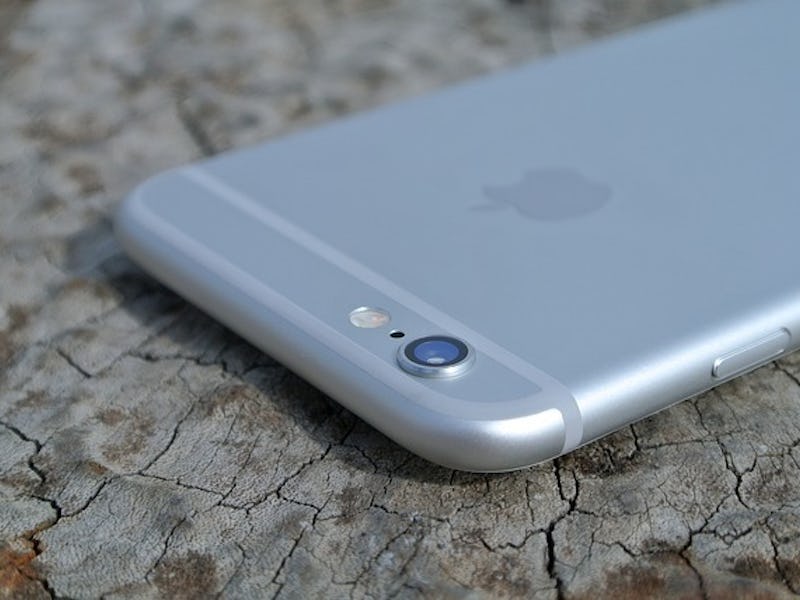Invert Your iPhone's Colors to Improve Your Memory
What if you could tweak Apple's iOS color palette to make information easier to remember?

More than anything else, Apple is known for its design — sleek lines, muted tones, uniformity of experience. These aren’t just characteristics of the machines Apple produces but also hallmarks of the software that runs them. Across the board, Apple’s operating system experience is full of steel grays, muted blues, and pastel rainbows.
Sure, the palette looks great and the colors look sharp together, but could the color scheme used in Apple’s IOS actually hinder our ability to remember? As our phones dictate more of our lives, shouldn’t we use every opportunity to retain the important information they’re telling us? Could tweaking the color help us remember to pick up grandma?
Maybe.
According to a review published in the Malaysian Journal of Medical Science, not only is the presence of color important, but specific colors and color combinations can have a big impact on a person’s ability to remember stuff. Apple’s iOS looks great, but if users want to mentally access what their iPhone has told them, it may help to introduce a little bit of ugly and make the important information stand out. A feature built into iOS9, originally intended to help colorblind and visually impaired people better see their screens, may be just the kind of ugly to help the rest of us remember.
In “The Influence of Color on Memory,” authors Muhammad Faiz Mustafarit and Mariam Adawiah Dzulkifli point out that the preeminent psychological models on memory all postulate in one way or another, “a deeper level of analysis contributes to a more lasting and longer memory ability.” The more we mull over a thing and the more ways we mull it over, stronger our memory of that thing.
The presence of color in the mind’s eye can help with focus, aid in associating emotion to memory, and can create a depth of contrast absent in a gray or muted color scale world. Color, especially striking color, makes our brain stand up and take notice, it adds to the stimuli associated with the thing we’re trying to recall, and that helps us to remember more.
There are a few reasons for this: First, bold color demands our attention. And that focus on one particular thing helps transfer the memory from our short-term to the long-term. Certain warm colors such as yellow and red have even been shown to increase our attention (think “stop” or “yield” signs). Bold colors also help stir emotion: a deep red invokes notions of blood and love while blue hues make us think of cool and calm. By hinting at these emotions, color can help associate yet another aspect of our thinking with the memory. This greater engagement makes memories easier to access according to Mustafarit and Dzulkifli.
Apple’s guidelines for iOS developers says that a “subtle use of color is a great way to communicate your brand.” But that’s not how memory works. Subtle is rarely remembered, but bold is never forgotten. Apple can look to its own history to see how the use of color helps a thing stick in the minds of consumers. Jill Morton, in an article for a color consulting firm ColorCom, points out, “By introducing the colorful iMacs, Apple was the first to say, ‘It doesn’t have to be beige’. The iMacs reinvigorated a brand that had suffered $1.8 billion of losses in two years.”
Jared Spool, founder of User Interface Design famously said, “Good design, when it’s done well, becomes invisible.” And, from a usability perspective, he’s right, it just makes sense. It’s harder to pay attention to what we’re reading with how it’s presented foremost on our minds.
Apple knows design. Its default color palette is bland, and it’s meant to be. The company wants a high “readability” factor on their devices. A 2004 study published in the journal Behaviour and Information Technology, had students read over sample text presented on a computer screen in several different font-to-background color combinations. The researchers hypothesized black font over a white background would take the day for both retention and readability scores, and they were right for the most part. However, in some cases, it was a light blue over dark blue combo that actually helped people retain more of the information. Contrast was important, even within similar colors.
“Ugly” is remembered
A striking color combination that would be considered ugly design by most, “has the potential to increase chances of environmental stimuli to be encoded,” according to Mustafarit and Dzulkifli. The process of memory is like a path in a forest, the memory being the destination and the path the thoughts leading to that destination. Making a person think about, not only what they’re reading but how it’s presented, adds to the paths in their mind and provides more opportunities to get back to the memory. If they have to read it, and the color presentation jarred them, they’ll be more likely to remember.
The difference between effective design and easier to remember.
We have to read our phones, but the default iOS palette was created to look good, not to help us remember. However, there is a feature included that could create a more memorable color palette/experience for us all. It inverts the colors.
To do this go to Settings -> General -> Accessibility and switch on the, you guessed it, “Invert Colors” toggle. White turns to black, black is now purple, and blue becomes orange; any pictures are shown with a negative-type effect. It’s a pretty striking difference, but is it enough of a difference from the norm to help us remember what our phone tells us? There’s only one way to find out.